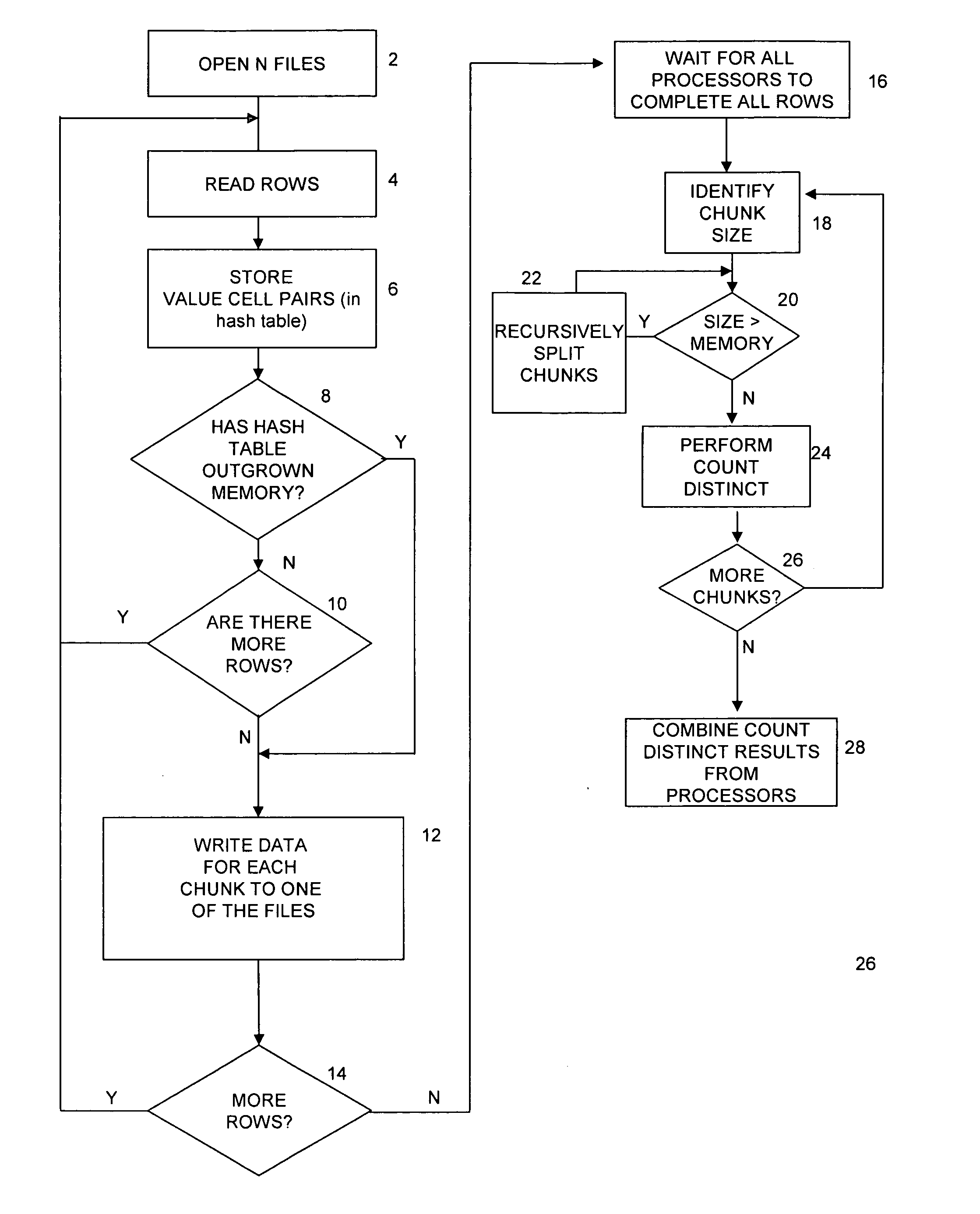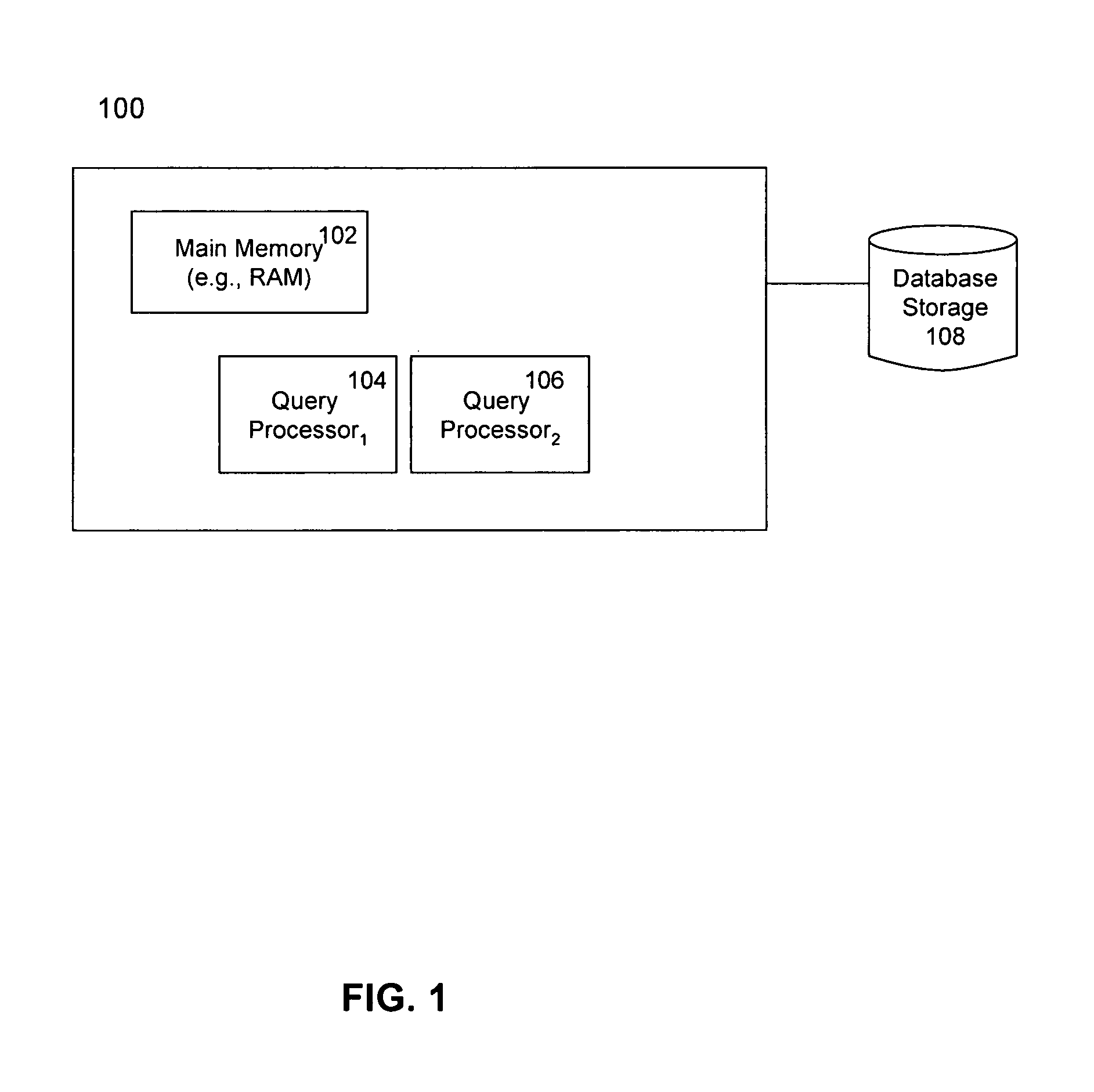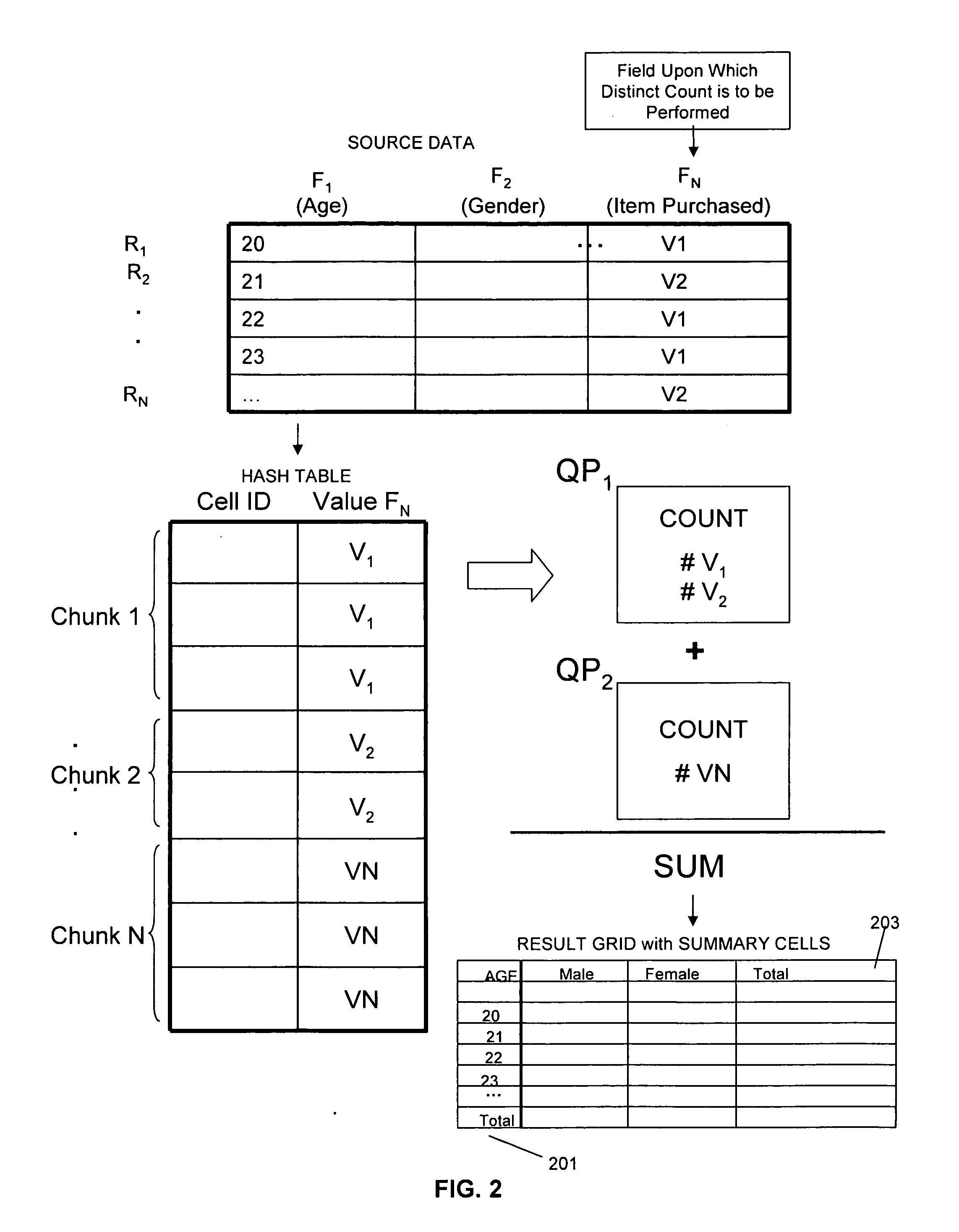Parallel processing of count distinct values
a count distinct value and parallel processing technology, applied in the field of parallel processing of count distinct values, can solve the problems of large amount of source data, complicating the performance of a count distinct function, and general inefficiency of prior approaches, and achieve the effect of facilitating parallelization
- Summary
- Abstract
- Description
- Claims
- Application Information
AI Technical Summary
Benefits of technology
Problems solved by technology
Method used
Image
Examples
Embodiment Construction
[0020] A system of the present invention may be implemented according to parallel operations carried out by a set of processors responsible for performing operations associated with the invention. As shown in FIG. 1, by way of example, a relational database system 100 may store one or more data records to be processed in main memory 102. Database storage 108 may provide storage space. In a relational database system the data may be referred to as tables. Tables may include records and fields. Records may be referred to as rows and fields may be referred to as columns. According to an embodiment of the invention, a relational database system may comprise at least a main memory 102 (e.g., RAM) and two or more query processors (104, 106) among other things, for carrying out a method of the invention. Data may be written to and / or read from main memory 102. The query processors (104, 106) may process data from main memory 102. The plurality of query processors may perform operations sim...
PUM
 Login to View More
Login to View More Abstract
Description
Claims
Application Information
 Login to View More
Login to View More - R&D
- Intellectual Property
- Life Sciences
- Materials
- Tech Scout
- Unparalleled Data Quality
- Higher Quality Content
- 60% Fewer Hallucinations
Browse by: Latest US Patents, China's latest patents, Technical Efficacy Thesaurus, Application Domain, Technology Topic, Popular Technical Reports.
© 2025 PatSnap. All rights reserved.Legal|Privacy policy|Modern Slavery Act Transparency Statement|Sitemap|About US| Contact US: help@patsnap.com



